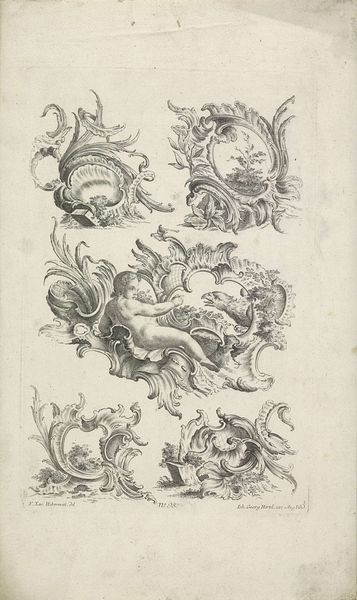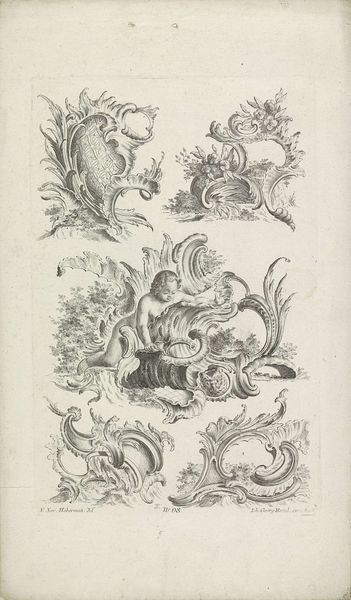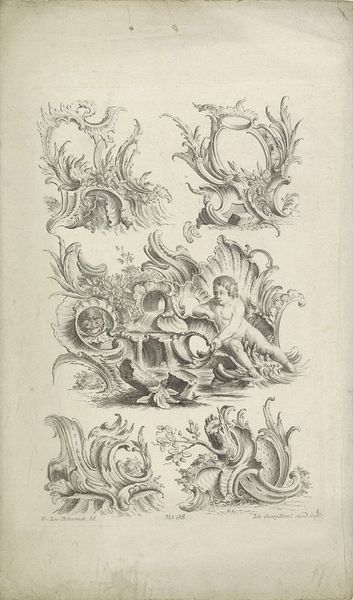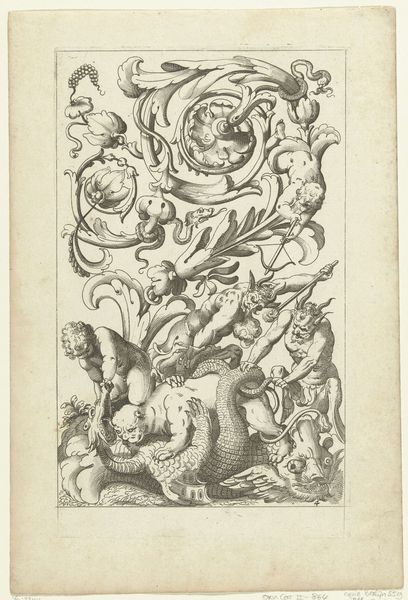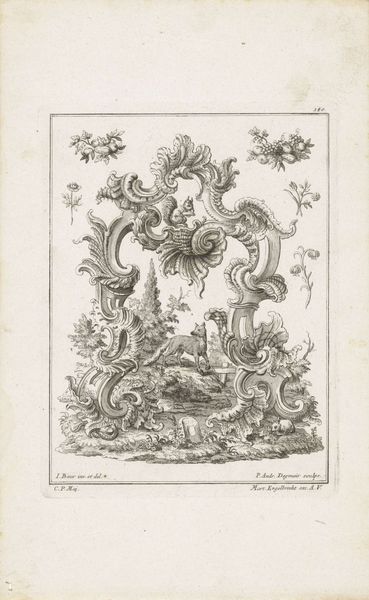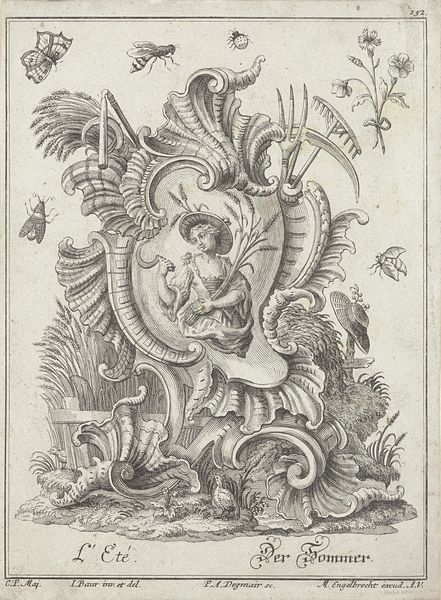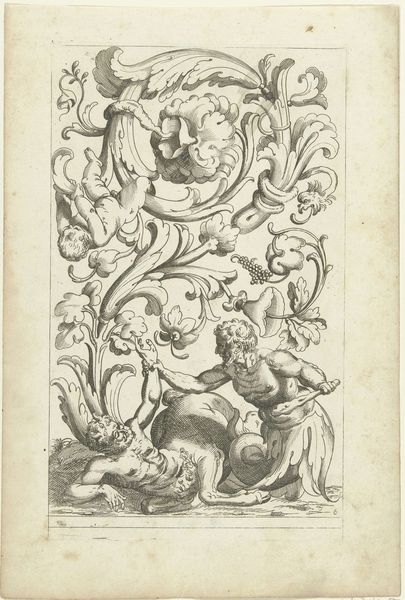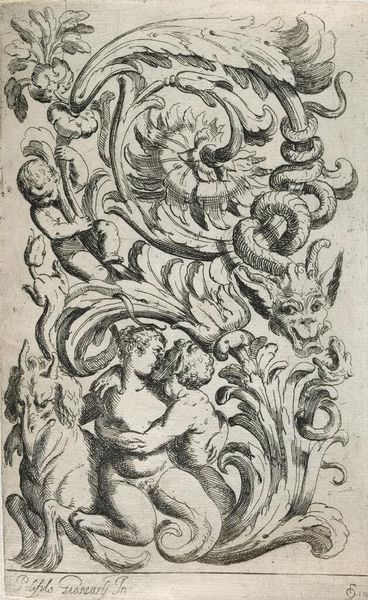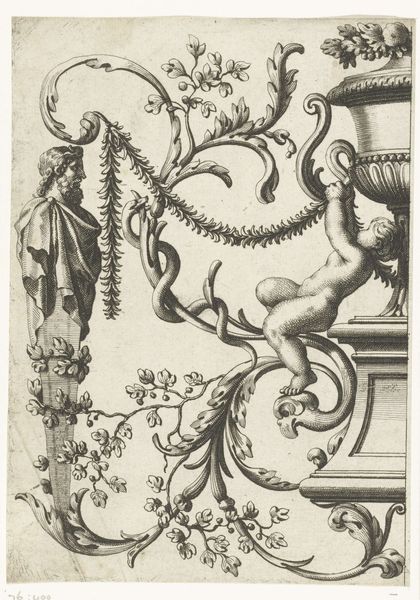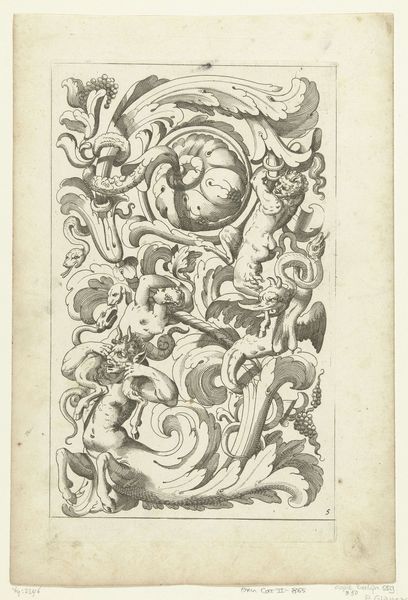
carving, print, engraving
#
carving
#
baroque
# print
#
old engraving style
#
figuration
#
engraving
#
rococo
Dimensions: height 299 mm, width 195 mm
Copyright: Rijks Museum: Open Domain
Curator: I'm drawn to the intricate detail in this print titled "Rocailles met putto en wolf," dating from between 1731 and 1775, currently held here at the Rijksmuseum. It’s an engraving showcasing the rococo style by Emanuel Eichel. It has such lightness but density to it! What is your first impression of it? Editor: It feels like a dream you half-remember, a whisper of lace and faerie tales, but slightly…menacing? I mean, look at the putto and the wolf. Such delicate curls surrounding potentially feral tension. I feel like I should look at the entire image through one of those swirling rococo frames, you know? Curator: Precisely. The rococo style, especially prominent in interior design, used the "rocaille"—an imitation of shell and rock forms. Those whimsical forms carry layers of symbolism, often blurring the line between playful delight and nature's underlying wildness. The putto, traditionally a symbol of divine love, juxtaposed with the wolf…It certainly subverts expectations, doesn't it? Editor: It’s interesting that those are two sides of one image and also how fashion and taste make their way to create new things... I love thinking about what's acceptable as pretty versus monstrous shifts so often; who decided a wolf, something beautiful but with such a bad rap throughout history, would adorn someone's drawing room alongside a cupid? Also, can we talk about scale? Because these seem like small pieces of prints in comparison. What kind of an emotional effect did the artwork achieve because of its scale and technique? Curator: Exactly! Engraving allowed for wider dissemination, but its delicate nature invited a close and intense engagement. I like how you point out to the question of "beauty vs monstrous"... Perhaps Eichel is deliberately playing with those perceptions, using familiar symbolic language to express the ambivalence towards nature inherent in rococo aesthetics? The wildness held and captured on paper.. The scale emphasizes the control, that wild beauty must be placed onto such fine detail! Editor: The question you brought up about the ambivalent toward nature has been floating through my head since we started. To know that we once made and used artworks like these! Wow. That says it all. Thanks for sharing all of that, it felt insightful. Curator: Thank you for bringing the fresh and more contemporary viewpoint! I believe that the questions the work puts forth keep pushing boundaries in art!
Comments
No comments
Be the first to comment and join the conversation on the ultimate creative platform.
